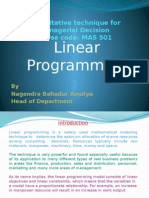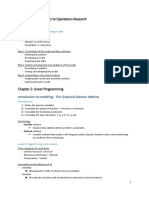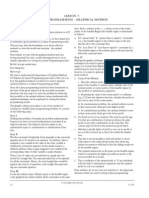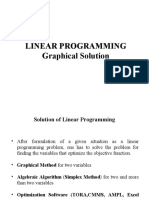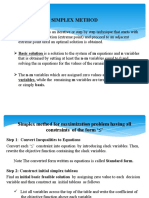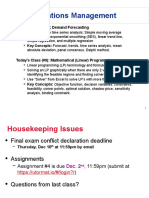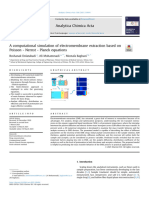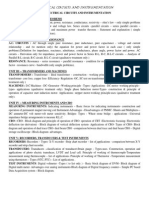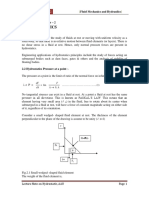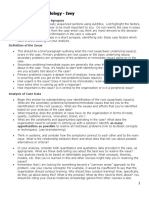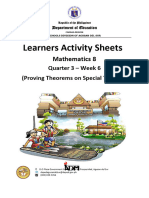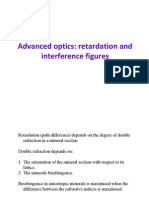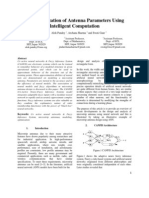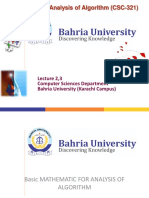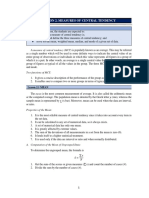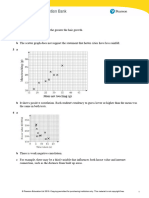0% found this document useful (0 votes)
10 views7 pagesTopic 2
The document discusses linear programming as a management science tool for solving optimization problems through models consisting of linear equations and constraints. It outlines the formulation of linear programming problems, including decision variables, objective functions, and constraints, and introduces graphical and simplex methods for finding optimal solutions. Additionally, it highlights the pros and cons of the graphical method and provides a detailed explanation of the simplex method for solving linear programming problems.
Uploaded by
namiii.dumpCopyright
© © All Rights Reserved
We take content rights seriously. If you suspect this is your content, claim it here.
Available Formats
Download as PDF, TXT or read online on Scribd
0% found this document useful (0 votes)
10 views7 pagesTopic 2
The document discusses linear programming as a management science tool for solving optimization problems through models consisting of linear equations and constraints. It outlines the formulation of linear programming problems, including decision variables, objective functions, and constraints, and introduces graphical and simplex methods for finding optimal solutions. Additionally, it highlights the pros and cons of the graphical method and provides a detailed explanation of the simplex method for solving linear programming problems.
Uploaded by
namiii.dumpCopyright
© © All Rights Reserved
We take content rights seriously. If you suspect this is your content, claim it here.
Available Formats
Download as PDF, TXT or read online on Scribd
/ 7



